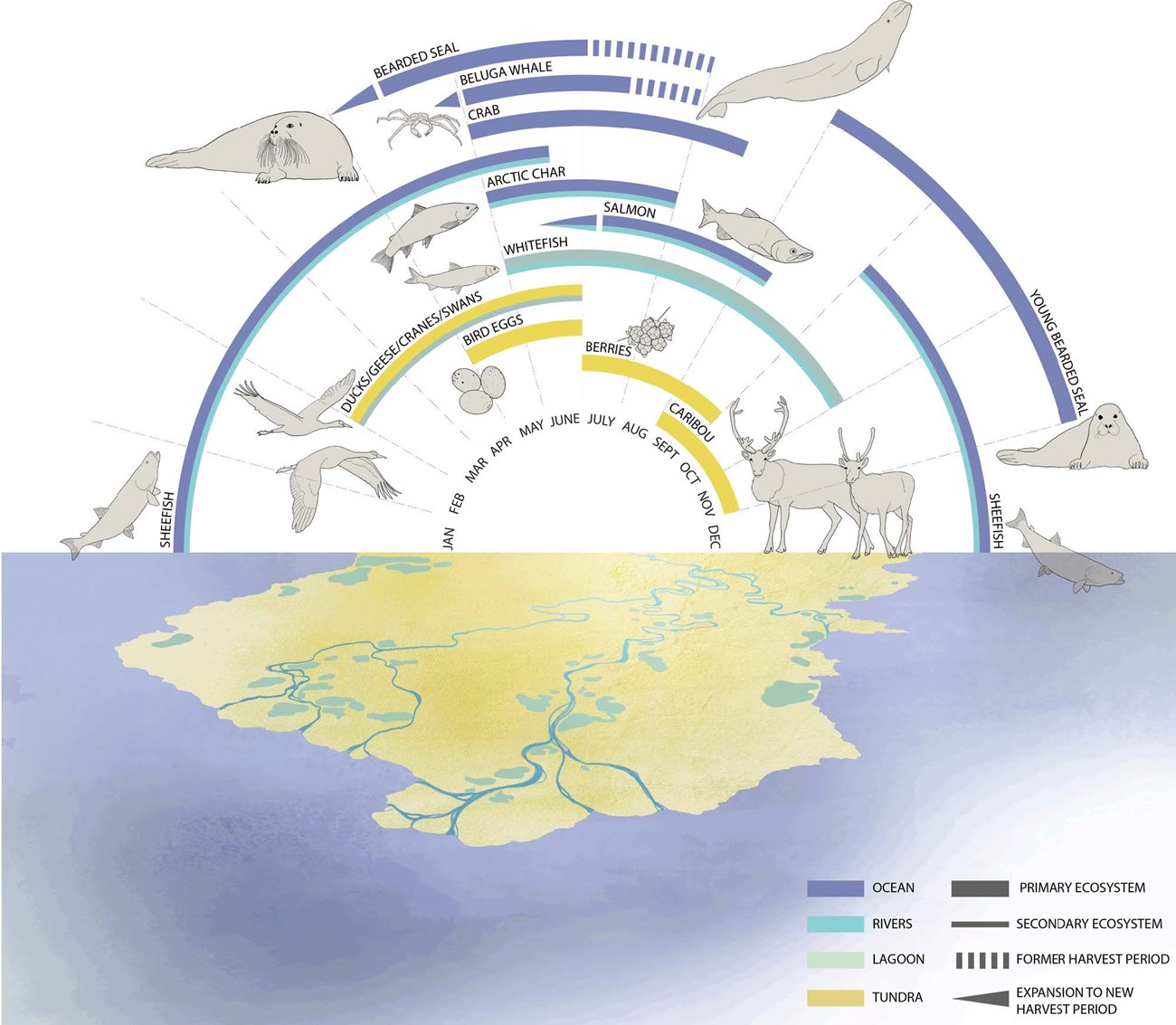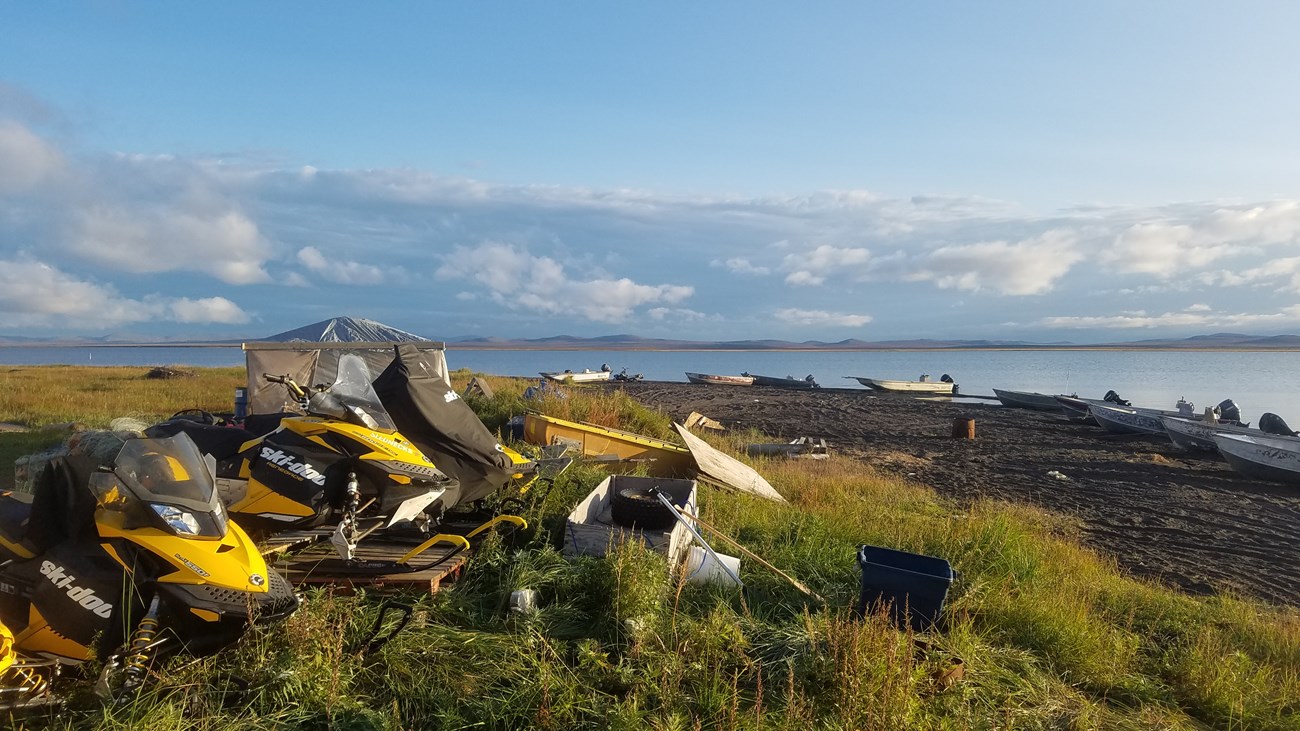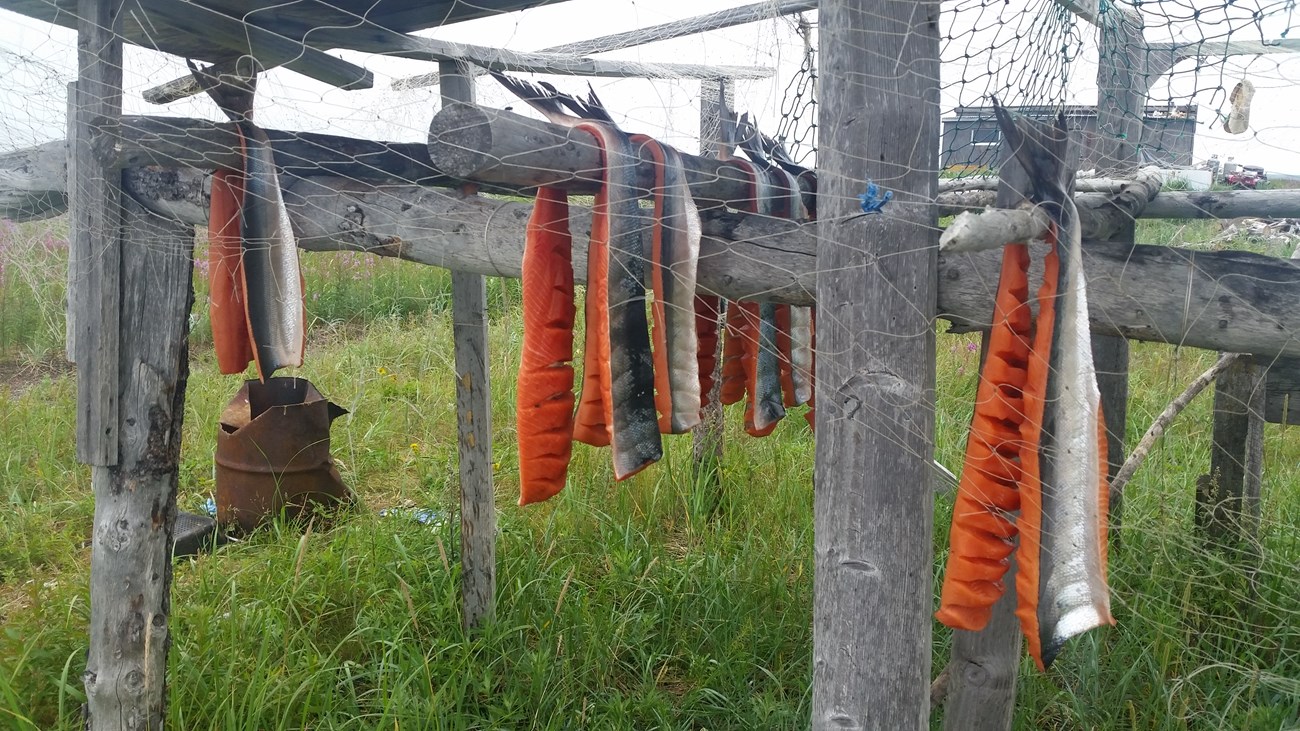Last updated: December 9, 2021
Article
Changing climate, changing access for Arctic Indigenous harvesters in National Parklands
By Alix Pfennigwerth
How is climate change impacting Indigenous communities’ access to subsistence coastal resources in and around Western Arctic National Parklands? Recently published research in Ecology and Society examines this question.
The paper, led by Stanford University PhD candidate Kristen Green, highlights how climate stressors including changes in sea ice, coastal erosion, weather patterns, and snow cover are altering access to coastal subsistence resources for northwestern Alaska Iñupiat communities.
The paper, led by Stanford University PhD candidate Kristen Green, highlights how climate stressors including changes in sea ice, coastal erosion, weather patterns, and snow cover are altering access to coastal subsistence resources for northwestern Alaska Iñupiat communities.

Various mechanisms may mediate these changes in access and availability. For example, the use of boats will likely become increasingly important as sea ice retreats and the open water boating season lengthens. The sharing of knowledge among community members of how to harvest safely and efficiently in changing weather conditions, as well as the continued practice of sharing harvested food among family and friends, will also help maintain access despite a changing climate.

Harvesters also highlighted ways that communities are exploring alternatives to harvest, including growing a seasonal vegetable garden or relying more on store-bought foods, both of which would require additional capital, knowledge, skills, and time.
By understanding these impacts and potential adaptations to climate change, Western Arctic National Parks can better adapt their policies and programs to support food sovereignty and resilience in Indigenous Arctic communities.

This research project was funded in part by research and education grant from the Ocean Alaska Science and Learning Center.
You can read the full paper by Kristen Green and colleagues here.
Alix Pfennigwerth is a biologist and science communicator with the National Park Service.
